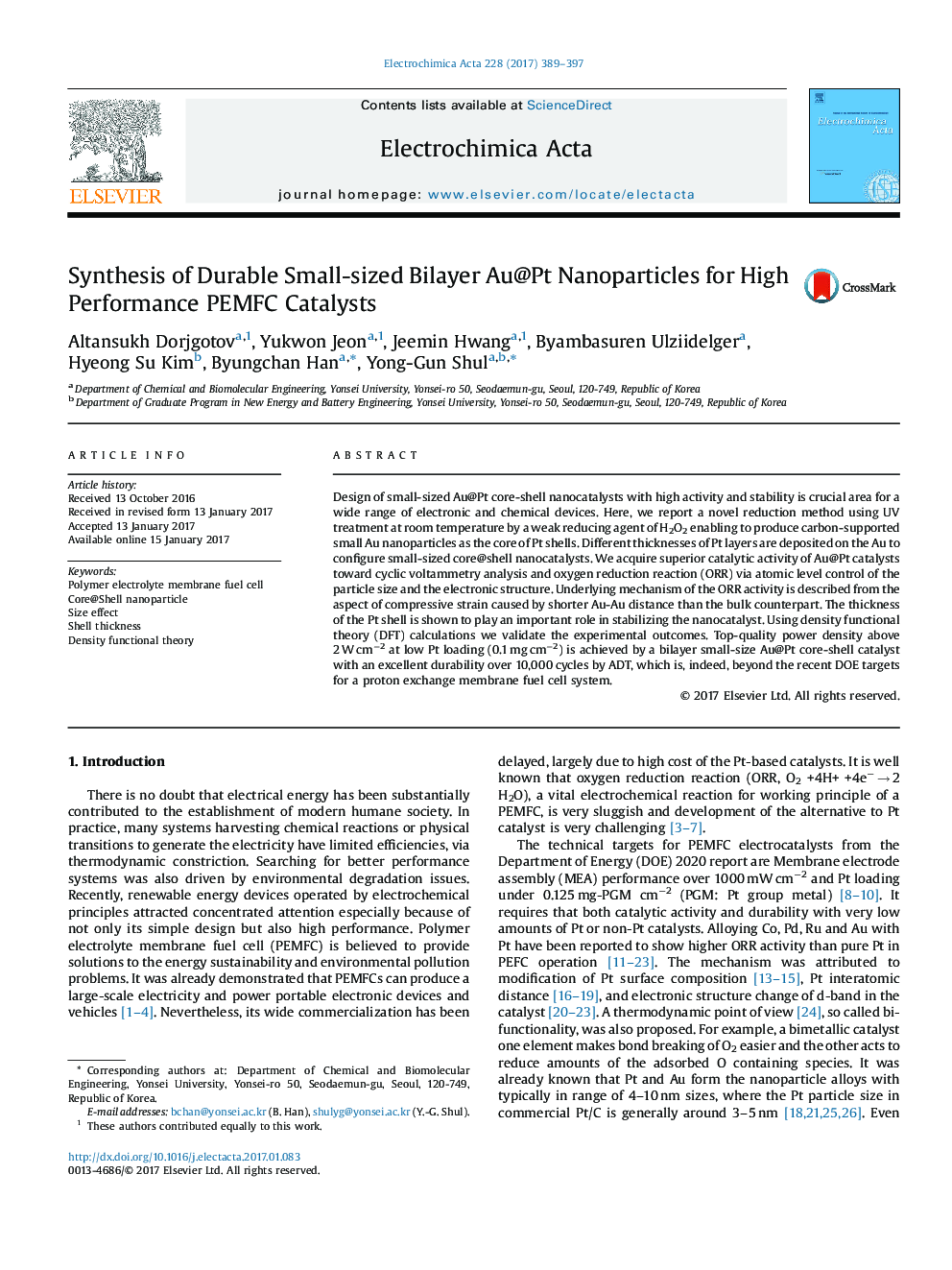| Article ID | Journal | Published Year | Pages | File Type |
|---|---|---|---|---|
| 4767455 | Electrochimica Acta | 2017 | 9 Pages |
Abstract
Design of small-sized Au@Pt core-shell nanocatalysts with high activity and stability is crucial area for a wide range of electronic and chemical devices. Here, we report a novel reduction method using UV treatment at room temperature by a weak reducing agent of H2O2 enabling to produce carbon-supported small Au nanoparticles as the core of Pt shells. Different thicknesses of Pt layers are deposited on the Au to configure small-sized core@shell nanocatalysts. We acquire superior catalytic activity of Au@Pt catalysts toward cyclic voltammetry analysis and oxygen reduction reaction (ORR) via atomic level control of the particle size and the electronic structure. Underlying mechanism of the ORR activity is described from the aspect of compressive strain caused by shorter Au-Au distance than the bulk counterpart. The thickness of the Pt shell is shown to play an important role in stabilizing the nanocatalyst. Using density functional theory (DFT) calculations we validate the experimental outcomes. Top-quality power density above 2 W cmâ2 at low Pt loading (0.1 mg cmâ2) is achieved by a bilayer small-size Au@Pt core-shell catalyst with an excellent durability over 10,000 cycles by ADT, which is, indeed, beyond the recent DOE targets for a proton exchange membrane fuel cell system.
Related Topics
Physical Sciences and Engineering
Chemical Engineering
Chemical Engineering (General)
Authors
Altansukh Dorjgotov, Yukwon Jeon, Jeemin Hwang, Byambasuren Ulziidelger, Hyeong Su Kim, Byungchan Han, Yong-Gun Shul,
